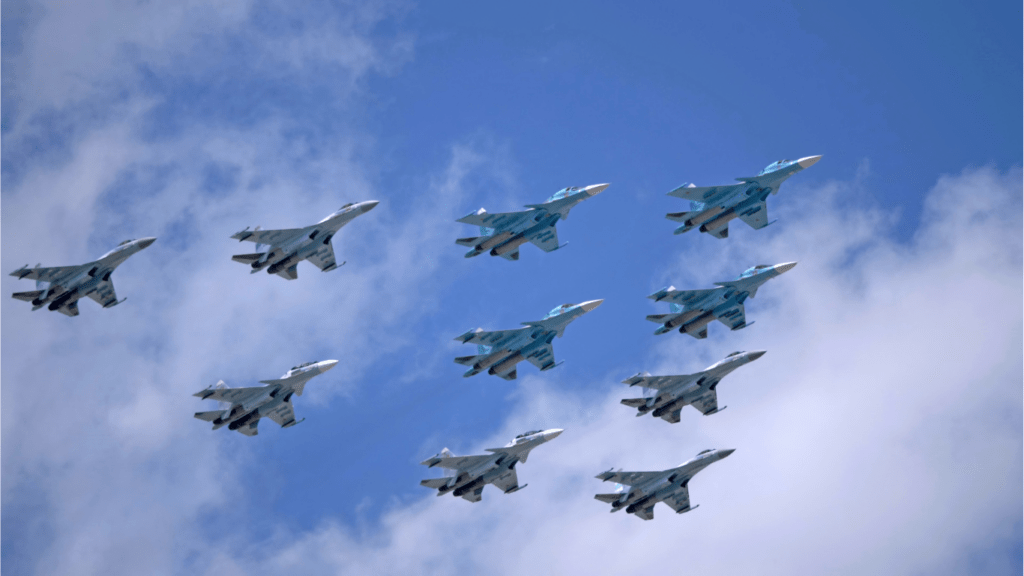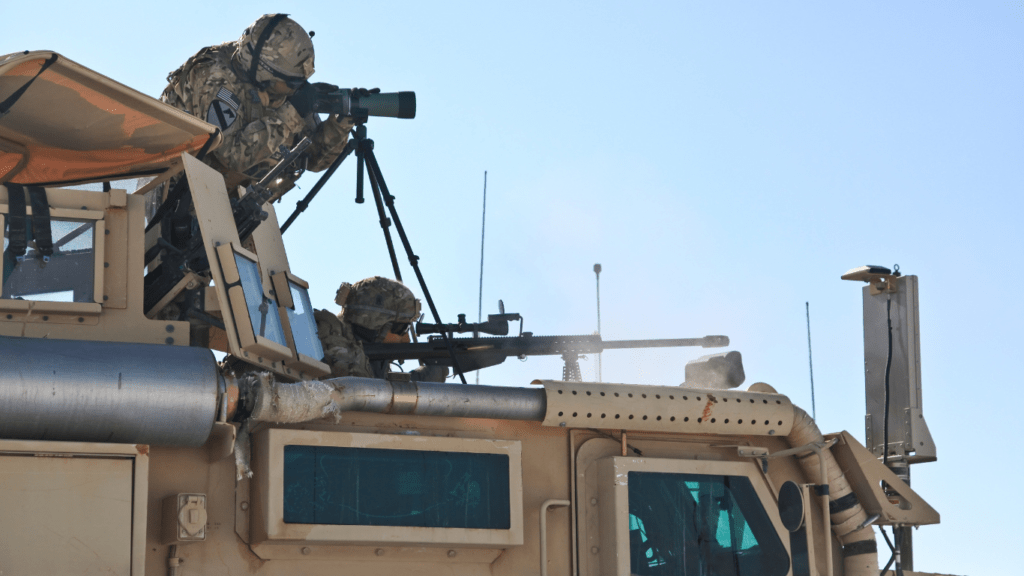Overview Of Current International Conflicts
International conflicts affect global stability and influence various socio-political dynamics. Several ongoing conflicts merit close examination due to their widespread impact.
Ukraine-Russia Conflict
The conflict between Ukraine and Russia is one of the most significant. It began in 2014 when Russia annexed Crimea. The situation escalated in 2022 when Russia initiated a full-scale invasion of Ukraine. This war has led to severe humanitarian crises, displacement of millions, and economic disruptions globally. Sanctions against Russia have affected global markets, particularly in energy and agriculture.
Israeli-Palestinian Conflict
The Israeli-Palestinian conflict, a protracted and deeply rooted struggle, continues to shape Middle Eastern geopolitics. It centers around territorial claims and the quest for national sovereignty. Periodic escalations, such as the 2021 Gaza conflict, result in civilian casualties and further entrench divisions. International efforts for a two-state solution highlight the complexity of achieving lasting peace.
Syrian Civil War
The Syrian Civil War has devastated the country since 2011. Initially part of the Arab Spring uprisings, it devolved into a multifaceted conflict involving Assad’s government, opposition groups, ISIS, and Kurdish forces. Foreign involvement from countries like Russia, Iran, and the US complicates the situation. This war has created one of the largest refugee crises, affecting neighboring countries and Europe.
Yemen Conflict
Yemen’s conflict, emerging from political upheaval in 2011, pits the Houthi movement against a Saudi-led coalition supporting the Yemeni government. This conflict has resulted in significant civilian suffering, with widespread famine and disease. International aid organizations struggle to meet the needs of affected populations amidst ongoing violence.
Ethiopia-Tigray Conflict
The conflict in the Tigray region of Ethiopia began in November 2020 between the Tigray People’s Liberation Front (TPLF) and the Ethiopian government. It has displaced hundreds of thousands and led to severe humanitarian conditions. Allegations of war crimes and human rights abuses have drawn international condemnation and calls for dialogue.
South China Sea Dispute
The South China Sea dispute involves multiple countries, including China, Vietnam, the Philippines, and Malaysia, contesting territorial waters. Strategic importance and rich natural resources fuel tensions. China’s extensive territorial claims have led to confrontations, impacting regional security and international trade routes.
These conflicts illustrate the complex web of geopolitical tensions. Understanding them is crucial for grasping their far-reaching implications in global affairs.
Major Conflicts Around The World

Several regions today face major conflicts with profound impacts on global dynamics. Here’s a closer look at the key areas experiencing significant turmoil.
Middle East
In the Middle East, the Israeli-Palestinian conflict continues to be a central issue. This conflict has roots going back over a century, with several escalations resulting in significant loss of life and instability in the region. Recent developments include tensions over Jerusalem’s status and cyclical violence in Gaza.
In Yemen, a civil war that began in 2014 has led to one of the world’s worst humanitarian crises. Houthi rebels and the Yemeni government, backed by a Saudi-led coalition, have created a complex battleground with severe civilian impact.
The Syrian Civil War, starting in 2011, involves multiple factions and international actors. The ongoing violence has displaced millions and created significant regional instability, affecting neighboring countries and beyond.
Eastern Europe
The Ukraine-Russia conflict is perhaps the most high-profile in Eastern Europe. It escalated dramatically in 2022 with Russia’s extensive invasion of Ukraine. This conflict has reshaped European security policies, led to significant sanctions on Russia, and caused immense humanitarian and economic damage to Ukraine.
The tension between Armenia and Azerbaijan over the Nagorno-Karabakh region is another critical issue. The 2020 war, though briefly quelled by a Russian-brokered ceasefire, left lasting hostilities which occasionally reignite.
Asia-Pacific
In the Asia-Pacific region, the South China Sea dispute involves multiple Southeast Asian countries contesting China’s expansive territorial claims. This conflict has implications for international trade routes and regional military balances.
The Korean Peninsula remains tense with the longstanding conflict between North and South Korea. North Korea’s nuclear ambitions and missile tests frequently heighten regional security concerns.
Africa
Africa also faces several major conflicts. The Ethiopia-Tigray conflict erupted in 2020 and continues with severe humanitarian consequences. Reports of war crimes and crimes against humanity are prevalent.
In Nigeria, multiple issues including Boko Haram’s insurgency in the northeast and separatist movements in other regions pose significant challenges. Violence often leads to substantial civilian displacement and socioeconomic disruption.
South Sudan struggles with internal conflicts despite its relatively recent independence in 2011. Ethnic violence and political power struggles have resulted in a fragile and volatile situation.
These conflicts highlight the intricate and interlinked nature of global tensions, underscoring the importance of comprehending their broad effects on international affairs.
Key Players And Their Roles
International conflicts involve a myriad of actors exerting significant influence on the unfolding events. Here’s an overview of the key players and their roles.
Governments
- Governments directly shape conflict trajectories by deploying military, economic, and diplomatic resources.
- The Russian government, led by President Vladimir Putin, has heavily influenced the Ukraine-Russia conflict through military operations and annexations.
- The Ukrainian government, under President Volodymyr Zelensky, counters with diplomatic appeals and defense efforts, seeking global support.
- Middle Eastern governments, like Israel and Palestine, engage in cycles of negotiations and conflicts impacting regional stability.
- The Syrian government’s actions, particularly under Bashar al-Assad, exemplify a prolonged civil war affecting millions.
- The Yemeni government, amid the civil war, struggles to maintain order against Houthi forces.
- Each government’s stance and policy decisions play crucial roles in conflict progression.
Rebel Groups
Rebel groups often drive insurgencies and internal conflicts, disrupting state stability. In Syria, groups like the Free Syrian Army and ISIS have battled both the Assad regime and each other, creating a complex war landscape. The Houthi movement in Yemen, challenging governmental authority, has significant control over northern regions, escalating humanitarian crises.
In the Ethiopian-Tigray conflict, the Tigray People’s Liberation Front (TPLF) opposes federal forces, leading to widespread suffering and displacement. In Nigeria, Boko Haram’s insurgency destabilizes the northeast, while separatist movements in different regions create additional pressures. These groups’ actions significantly impact conflict intensity and duration.
International Organizations
International organizations play critical roles in conflict mediation, humanitarian aid, and imposing sanctions. The United Nations (UN) conducts peacekeeping missions in conflict zones like South Sudan and Mali and facilitates negotiations in the Yemeni civil war. The North Atlantic Treaty Organization (NATO) supports Eastern European security, particularly through aid to Ukraine against Russian aggression.
The International Committee of the Red Cross (ICRC) provides essential humanitarian aid in war-torn areas, tackling crises in Syria, Yemen, and Ethiopia. The European Union imposes sanctions and offers diplomatic solutions in conflicts impacting its member states’ security. These organizations’ interventions shape conflict outcomes and relief efforts significantly.
Historical Context And Background
To understand current international conflicts, I find it essential to review the historical context and background that shaped them. This section delves into pre-modern conflicts, 20th-century conflicts, and post-Cold War tensions.
Pre-Modern Conflicts
Throughout history, pre-modern conflicts set the stage for contemporary issues. Feudal Europe saw numerous wars like the Hundred Years’ War and the Wars of the Roses. In Asia, the Mongol invasions during the 13th century altered geopolitical landscapes. Middle Eastern Crusades further complicated regional dynamics, embedding religious tensions still evident today. Various African kingdoms frequently clashed over resources, shaping current territorial disputes.
20th Century Conflicts
The 20th century was marked by significant conflicts that redefined national boundaries and global power structures. World War I and World War II saw unprecedented destruction and loss, leading to the formation of the United Nations. The Cold War split the world into East and West blocs, precipitating proxy wars in Korea and Vietnam. Decolonization efforts in Africa, Asia, and the Middle East resulted in numerous regional conflicts, many of which have enduring impacts, like the Indo-Pakistani wars over Kashmir.
Post-Cold War Tensions
The end of the Cold War in 1991 didn’t usher in a peaceful era; instead, new conflicts arose from power vacuums and ethnic tensions. The breakup of Yugoslavia led to violent wars in Bosnia and Herzegovina, Croatia, and Kosovo. In Africa, genocide in Rwanda and conflicts in the Democratic Republic of Congo caused widespread devastation. In the Middle East, the Gulf War and the ongoing Israeli-Palestinian conflict escalated with lasting global consequences. The rise of terrorism, particularly after 9/11, fundamentally shifted international security policies.
Humanitarian Impact
International conflicts have severe humanitarian impacts, affecting millions of civilians and disrupting daily life. This section explores the primary humanitarian consequences, including:
- civilian casualties
- the refugee crisis
- economic fallout
Civilian Casualties
Civilian casualties in conflict zones are distressingly common, resulting from both direct attacks and the collapse of essential infrastructure. In Syria, over 500,000 people have died since the civil war began in 2011 (Statista, 2023). Ukraine’s conflict since 2022 has seen significant civilian losses, markedly in Mariupol and Bucha. These losses extend beyond fatalities and include injuries and psychological trauma. The Israel-Palestine conflict has also seen numerous civilian deaths, particularly during escalations in Gaza.
Refugee Crisis
Refugee crises are another severe outcome of international conflicts. Over 13 million Syrians have been displaced since 2011, with many seeking asylum in Europe and neighboring countries like Turkey and Lebanon (UNHCR, 2023). The Yemen conflict has displaced around 4 million people, many living in dire conditions in camps. The Ukraine-Russia conflict has driven millions to flee, primarily to Poland and other European countries. Refugees face a myriad of challenges, including inadequate shelter, health care, and education, compounding their trauma.
Economic Consequences
The economic consequences of conflicts ripple across nations, hindering development and destabilizing markets. The Ukraine-Russia war has disrupted global supply chains, especially in the energy and agricultural sectors, causing price hikes worldwide. In Syria and Yemen, war has decimated infrastructure, stalling economic activity and plunging populations into poverty. Additionally, the South China Sea dispute affects international shipping lanes, impacting global trade and economic stability.
Potential Resolutions And Future Outlook
International conflicts require multifaceted approaches for resolution. Diplomatic efforts, peacekeeping missions, and long-term solutions play essential roles.
Diplomatic Efforts
Diplomatic channels aim to foster dialogue and negotiation among conflicting parties. Nations often engage in bilateral talks, leveraging diplomatic ties to de-escalate tensions. For instance, France and Germany have mediated discussions between Russia and Ukraine through the Normandy Format. The United Nations, a key international organization, often steps in to host peace talks, as seen in the Syrian peace process. When regional stability is at risk, coalitions like the European Union impose sanctions or offer incentives to encourage peaceful resolutions.
Peacekeeping Missions
Peacekeeping missions involve deploying international forces to conflict zones to maintain ceasefires and protect civilians. The UN spearheads many of these operations, having currently over 70,000 personnel in the field. In South Sudan, the UNMISS mission works to provide stability, while MONUSCO addresses conflicts in the Democratic Republic of Congo. NATO and other regional coalitions also contribute forces and logistics, often supporting training missions and enforcement of peace accords. These missions enhance local security and assist in humanitarian aid delivery.
Long-term Solutions
Addressing the root causes of conflicts is crucial for long-term peace. These include economic inequalities, political grievances, and social injustices. Development programs that focus on rebuilding infrastructure, improving governance, and fostering economic growth are fundamental. The Marshall Plan post-World War II serves as a model, demonstrating how investment in reconstruction can stabilize regions. Education and social integration initiatives are equally critical in preventing future conflicts, as seen in Rwanda’s post-genocide reconciliation efforts. Stable institutions and inclusive governance promote lasting peace and resilience against future disruptions.


 Paulah Simmonserly, the visionary behind News Flip Network, has built a platform that delivers timely and comprehensive news across multiple fields. With a deep passion for journalism and a commitment to keeping the public informed, Simmonserly ensures the site covers everything from global affairs to business trends, health insights, and sports updates. Her leadership emphasizes accuracy and relevance, making News Flip Network a trusted resource for readers seeking up-to-date information on the events shaping the world.
Paulah Simmonserly, the visionary behind News Flip Network, has built a platform that delivers timely and comprehensive news across multiple fields. With a deep passion for journalism and a commitment to keeping the public informed, Simmonserly ensures the site covers everything from global affairs to business trends, health insights, and sports updates. Her leadership emphasizes accuracy and relevance, making News Flip Network a trusted resource for readers seeking up-to-date information on the events shaping the world.